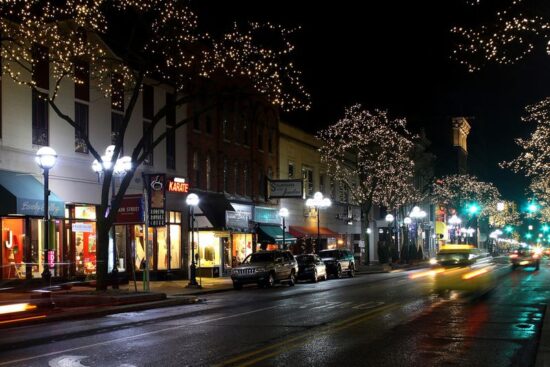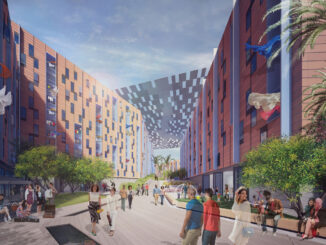
LED (light emitting diode) is a solid-state semiconductor device that converts electrical energy directly into light. Its development started in the 1960s and has been typically utilized as indicator lights in numerous electronic products, signage and flash light applications. Just in the last few years as its technology advanced, LEDs are now used in real lighting such as traffic lights and brake lights/tail lights (take a look at those dotted brake lights in many of the new car models). Unlike conventional light bulbs, LED lamps use less energy and are more efficient, safe, and durable. So far, LEDs still cost more upfront (just think about how much you pay for a LED flash light vs. a flash light with a standard light bulb). However, the energy savings in the long term can result in tremendous savings; not even mentioned is the reduction in CO2 emissions. Furthermore, with their directional light beams, LEDs used for outdoor lighting can reduce light pollution since we can direct more light to the streets rather than towards the sky!

Ann Arbor, Michigan has been piloting LED street lights for several years now. The first pilot project replaced all the “globe” street light bulbs in the downtown area. It is indeed a successful project. Per the City, the initial installation will save the City over $100,000 per year in energy costs and reduce annual greenhouse gas emissions by 267 tons of CO2. Below is the detailed cost comparison by the City of Ann Arbor.
LED “Globe” Light Life-Cycle Cost Analysis
| Existing Light Bulbs Over 10-Year Span | Number | Unit Cost | Total Cost |
| Bulb replacements (2 year life) | 5 | $37 | $186 |
| Bulb labor & equipment | 5 | $211 | $1,056 |
| Ballast (10 year life) | 1 | $59 | $59 |
| Igniter (10 year life) | 1 | $35 | $35 |
| Energy cost (4,380 kWh) | – | – | $325 |
| Total Cost | $1,661 |
| LED Bulbs Over 10-Year Span | Number | Unit Cost | Total Cost |
| Bulb replacements (10 year life) | 1 | $460 | $460 |
| Bulb labor & equipment | 1 | $56 | $56 |
| Energy cost (2,100 kWh) | – | – | $182 |
| Total Cost | $698 |
10-year bulb, assembly, and maintenance savings: $820
10-year energy savings: $143
Total savings: $963
* Per the City of Ann Arbor: “Each LED replacement bulb saves $962 in energy and maintenance costs over its ten-year lifetime. At this savings rate, the new bulb pays for itself in 4.4 years ($423 / $96).” [This is how the 4.4 years is calculated: Bulb cost/ yearly saving = ($460-$37) / ($962/10 yr) = 4.39 year]
The biggest saving is the maintenance cost. Getting a crew on a lift to replace street light bulbs and parts is not cheap. Reduced maintenance cost is sufficient to make LED fixtures cheaper on a life-cycle basis than do conventional fixtures.
In addition to the “globe” street light project, the City of Ann Arbor also plans to replace the conventional “cobra-head” type of street lights. Evaluation of LED cobra-head street lights started in 2005. The City installed the first LED cobra-head street light sample in the City Hall parking lot and the finding was that the “the new technology was not ready at that time.” However, as the technology improved on light output and color rendition in the past few years, the possibility of installing reliable LED cobra-head street lights was becoming more of a real option. Thus, the City started the second test trial by inviting several more LED manufacturers to provide more LED cobra-head street lights for evaluation while the City installed the lights at its own expense.

Wattages in this new group of LED cobra-head test lights varied from 50 to 80 watts as compared to the existing 250-watt fixtures. The City has been conducting its own evaluations which include a four-part assessment: light output; heat management (very critical to the lifetime of fixture); energy consumption; and general public input. The test is still on-going now.
I have visited the various lighting test locations several times and my personal experience with the test lights is very positive. The low-wattage LED lights are so bright (except for one sample) that I could not tell the differences between the LED lights and the conventional street lights other than the appearance since these lights look so unique. So far, the following manufacturers are involved with trial testing: Holophane, IntenCity, Leotek, Lumecon, Millenia Technologies, and RUUD from Canada. The City Program Manager has told me that even the most economic brand is still above $500/ea and it is way more than the cost of conventional lights.

The LED light colors are all like blue/white except for one that is like blue/purple. From the durability point of view, I have noticed only one “dot” (chip) that was not lit in one of the test lights, but there was no real affect on the luminance output perceived by my eyes. The public comments so far are overwhelmingly good but some people did complain that the lights are kind of “harsh” and few neighbors complained that they lost free “night lights” because the LED light provides a direct light beam rather than a spreaded light beam. My take on this is that it is uncomfortable only if you stare at these LED lights directly. It may affect driving only at certain angles but it is no different than that of the conventional street lights.
One problem that I did notice is at Nixon Road, a newly re-designed/repaved street where a couple of new LED cobra-head street lights were installed in a row and designed to light the 2-way road/sidewalk. In my first test drive on this street, I felt like I was passing through a bunch of “light columns.” The LED light points are very direct and they produce minimum glare when compared to those of conventional HID lights. Since the speed limit is 35 mi/hr, I cannot say how the effects would it be if I drove faster. Even though it feels different, I have to say that the street was brighter than it was before. Maybe the new lighting layout or light pole height are different, but I have no doubt that the LED cobra-head street light can be used as a replacement for the HID lights. The LED technology definitely still has room to grow in uniform luminance distribution, but the energy saving, low maintenance, and environmental friendly advantages will make LED street lights the preferable option in the near future.





Be the first to comment